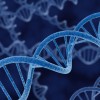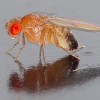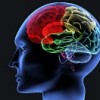Fighting Addiction
 Having an addiction can be devastating, to those that have it and to those that are exposed to it. The addiction can be to a variety of different things such as alcohol, drugs, gambling, internet shopping, video games or even work. But what causes these addictions? Why do some people have the ability to enjoy these things, yet leave them, while others seem to never be able to stop?
Having an addiction can be devastating, to those that have it and to those that are exposed to it. The addiction can be to a variety of different things such as alcohol, drugs, gambling, internet shopping, video games or even work. But what causes these addictions? Why do some people have the ability to enjoy these things, yet leave them, while others seem to never be able to stop?
Well, it could be your family and it could be your environment. Studies have shown that addictions run in families. In fact, if a parent has an addiction, the child is 4 to 8 times more likely to have an addiction as well. It doesn’t necessarily have to be the same addiction, but an addiction nonetheless. Those with other family members with an addiction are more susceptible to the disease, but that also doesn’t mean that the disease is inevitable.
Saying that addiction runs in the family would speculate a possible genetic component. In fact, researchers are currently trying to link addiction to a cluster of genes in the human genome. Scientists are looking for “addiction genes” that are biologically different from others that might make someone prone to addiction. It also might affect the severity of withdrawals.
For example, in humans, a candidate gene for addiction includes the A1 allele of dopamine receptor gene DRD2 which is common in those with alcohol and cocaine addictions. Also, non-smokers are more likely to carry a protective gene, CYP2A6, which causes them to feel more nausea and dizziness from smoking.
Mice have been a model for studies on human addiction because the reward pathway functions in mice are very similar to those in the human brain.
Mice bred to lack serotonin receptor gene Htr1b are more attracted to cocaine and alcohol. Those with low levels of neuropeptide Y drink more alcohol while those with higher levels tend to abstain from alcohol.
It mainly all comes down to the reward pathway in our brains. The reward pathway is in the center of our brain and connects to other areas such as those controlling memory and behavior. It’s responsible for driving our feelings of motivation, rewards and behavior. The main job of the pathway is to make us feel good when we engage in behaviors essential to survival such as eating and drinking. Places in the brain gather information about what’s happening outside of our body and then strengthen circuits within the brain that control desirable behavior.
For instance, say you’re thirsty and someone hands you a cold water bottle. The brain will tell you that there’s cold water in front of you. Stored in your brain is a memory that says “if you drink that water, you won’t be thirsty anymore and you’ll feel good!” So you’ll drink the water. While drinking, you’re 5 senses will send a single to your brain about drinking the water. The brain, in response will release dopamine, giving you a jolt of pleasure which is your instant reward. The reward pathway will make you repeat the behavior for the same dopamine reward, like a dog doing a trick for a dog biscuit. The wiring in your brain for that particular activity has been strengthened.
Despite the genetic link, it’s not all due to our DNA makeup. Essentially, addiction is the combination of the interaction of several genes (not just a single gene) with social and environmental factors. Also, just because someone has all that’s necessary for an addiction doesn’t mean they’ll have an addiction problem. For example, I know I have an addictive personality but I look for other ways to expel or sedate the addiction and to put that addictive capability to better use.
Researchers have been searching for ways to treat and prevent addictions. One way is the identification of genes. The genes can become “drug targets,” in which researchers can work to modify the gene product’s activity resulting in stabilizing or reversing pathways to restore the brain to proper function.
Earlier this year, researchers at UT Southwestern Medical Center have a new hypothesis. They hope that by increasing a process known as neurogenesis it might prevent or treat addiction. Neurogenesis is a normally occurring process of making nerve cells in the brain. In previous studies, blocking neurogenesis had increased a rodent’s vulnerability for cocaine addiction and relapse. They hope that by stimulating the increase of neurogenesis, it might combat addiction. Another application is to use this increased neurogenesis in situations where a patient is required to use a potentially addicted medication such as Vicodin, a severe pain killer with a high addiction rate. Perhaps this treatment may be used in those who have quit their addiction in order to prevent a relapse.
Recently, new research focusing on microRNA (miRNA) and gene expression might also have a potential effect on the fight with addiction. miRNAs are used in gene expression regulation and gene silencing. They bind to complementary mRNA strands and prevent translation to a protein. Raising the levels of miR-212, an miRNA, in the brains of cocaine-using rats have caused the rodents to take in less of the drug. Completely blocking the miRNA, and allowing full gene expression, increased the drug use. This would suggest a new drug target- a medication to raise miR-212 levels or at least creating something to mimic the miRNA’s function. Liked to miR-212 is an increase in the protein CREB. CREB holds promise in fighting drug addiction by decreasing the reward response, sometimes actually creating an aversion to it all together. The only obstacle with CREB drug targets is the regulation of it. The level cannot become too low (where the rewards are increased) because it can lead to addiction and anxiety, but it cannot become too high (where nothing is rewarding) which can lead to depression. This study has only been done with cocaine and is currently under investigation for the applications in nicotine and alcohol addictions.
Someday, possibly, there will be ways for those suffering from addictions, whether they be chemical addictions, which is heavily mentioned here, or an addiction to more physical things to overcome that addiction and lead healthier lives.
| Print article | This entry was posted by Jennifer Aiello on August 13, 2010 at 11:17 am, and is filed under G2C Online. Follow any responses to this post through RSS 2.0. You can skip to the end and leave a response. Pinging is currently not allowed. |









